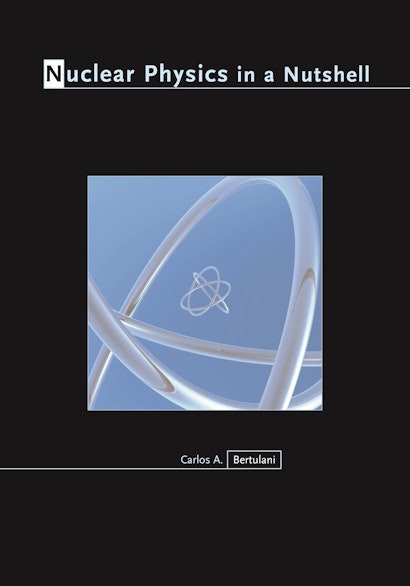Nuclear Physics in a Nutshell provides a clear, concise, and up-to-date overview of the atomic nucleus and the theories that seek to explain it. Bringing together a systematic explanation of hadrons, nuclei, and stars for the first time in one volume, Carlos A. Bertulani provides the core material needed by graduate and advanced undergraduate students of physics to acquire a solid understanding of nuclear and particle science. Nuclear Physics in a Nutshell is the definitive new resource for anyone considering a career in this dynamic field.
The book opens by setting nuclear physics in the context of elementary particle physics and then shows how simple models can provide an understanding of the properties of nuclei, both in their ground states and excited states, and also of the nature of nuclear reactions. It then describes: nuclear constituents and their characteristics; nuclear interactions; nuclear structure, including the liquid-drop model approach, and the nuclear shell model; and recent developments such as the nuclear mean-field and the nuclear physics of very light nuclei, nuclear reactions with unstable nuclear beams, and the role of nuclear physics in energy production and nucleosynthesis in stars.
Throughout, discussions of theory are reinforced with examples that provide applications, thus aiding students in their reading and analysis of current literature. Each chapter closes with problems, and appendixes address supporting technical topics.
Carlos A. Bertulani is Research Professor of Physics at the University of Tennessee and the Oak Ridge National Laboratory. He is the author of Physics of Radioactive Nuclear Beams, Introduction to Nuclear Physics, and Introduction to Nuclear Reactions.
"An excellent section on nuclear astrophysics is included, as is an up-to-date treatment of rare nuclear isotopes. A reasonable number of problems are provided along with five appendixes on related material and an extensive list of references."—R.L. Stearns, Choice
"Nuclear Physics in a Nutshell provides a clear, concise, and up-to-date overview of the atomic nucleus and the theories that seek to explain it. Bringing together a systematic explanation of hadrons, nuclei, and stars for the first time in one volume, Carlos A. Bertulani provides the core material needed by graduate and advanced undergraduate students of physics to acquire a solid understanding of nuclear and particle science. . . . If you are looking for a text that provides the core material needed by graduate and advanced undergraduate students of physics to acquire a solid understanding of nuclear and particle science, you do not have to look further, for Nuclear Physics in a Nutshell is the definitive new resource for anyone considering a career in this dynamic field."—Current Engineering Practice
"On the In a Nutshell series: "Both the publishers and the editors and the authors deserve our gratitude for such a high-profile series that has been designed to bring out the highest quality texts on subjects ranging from astrophysics, nuclear physics, and string theory, to particle physics, neutrino physics, electromagnetism, and magnetism. Dear Readers: is this not enough for you!""—Current Engineering Practice
"The particular attraction of this book is the detail with which it provides, in one place, all of the essential physics required for an understanding of the field. An excellent piece of scholarship, it will come to be regarded as an essential text for beginning graduate physics study. Indeed, I know of no other modern treatment other than this that goes to such lengths, and within this context it is indeed a tour de force."—David A. Bradley, University of Surrey
"This book does a fine job of developing three topics—hadrons, nuclei, and stars—that are often covered separately, and bringing them together in an appealing way in the context of real physical systems. Remarkably self-contained, with helpful, unobtrusive appendices, it develops most physical concepts from start to finish. It can be used for a course on stellar physics, nuclear physics, or advanced quantum mechanics."—Savas Dimopoulos, Stanford University

